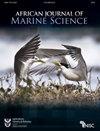A decade of surf-zone linefish monitoring in the Dwesa-Cwebe Marine Protected Area, with a preliminary assessment of the effects of rezoning and resource use
IF 1.4
4区 生物学
Q3 MARINE & FRESHWATER BIOLOGY
引用次数: 4
Abstract
An 11-year assessment of surf-zone linefish (marine fish captured on hook and line) was carried out in the Dwesa-Cwebe Marine Protected Area (MPA) in the Eastern Cape, South Africa, by research fishing to determine species and size composition, movement and relative abundance using catch per unit effort (CPUE). Comparisons were made between the Cwebe and Dwesa sections of the MPA on either side of the Mbhashe Estuary, as well as between two partially protected areas (PPAs) and two no-take zones in the Dwesa section, which came into effect in January 2016. A total of 7 241 fish representing 43 species were recorded, where 39.5% of the species are endemic, 29.5% are considered threatened by the IUCN, and 27.3% are either overexploited, collapsed or in decline. Of 3 963 tagged fish, 128 (3.2%) recaptures were recorded, of which most (62%) exhibited no movement. Localised differences in species diversity, size frequency and CPUE were detected between the Dwesa and Cwebe sections, and lower average length and CPUE of some species were recorded in the Dwesa PPAs compared with in the Dwesa no-take zones. These differences were more prominent in slow-growing, long-lived species with small home ranges, indicating the negative impacts of fishing pressure on vulnerable species found in this MPA and a reduction in benefits that would otherwise be associated with no-take zonation. These findings highlight the need to revisit the rezoning of the MPA with regard to the size of the no-take zones and emphasise the need for effective law enforcement to ensure adherence to existing regulations.对德威萨-丘贝海洋保护区的冲浪区线鱼进行了十年的监测,并对重新分区和资源利用的影响进行了初步评估
在南非东开普省的德威萨-库贝海洋保护区(MPA),通过研究捕鱼来确定种类和大小组成、运动和单位努力渔获量(CPUE)的相对丰度,对冲浪区线鱼(用钩和线捕获的海鱼)进行了为期11年的评估。比较了Mbhashe河口两侧的海洋保护区Cwebe和Dwesa区域,以及2016年1月生效的Dwesa区域的两个部分保护区(PPAs)和两个禁渔区。共记录到43种7 241种鱼类,其中39.5%为特有物种,29.5%为世界自然保护联盟(IUCN)认为受到威胁的物种,27.3%为过度开发、灭绝或数量减少的物种。在3 963条有标记的鱼中,有128条(3.2%)被捕获,其中大多数(62%)没有移动。物种多样性、大小频率和CPUE在Dwesa和Cwebe区域存在局部差异,部分物种的平均长度和CPUE在Dwesa保护区比在Dwesa禁渔区要低。这些差异在生长缓慢、寿命长、活动范围小的物种中更为突出,表明捕捞压力对该海洋保护区中发现的脆弱物种产生了负面影响,并减少了与禁捕区有关的利益。这些调查结果突出表明,有必要重新考虑海洋保护区禁渔区的大小,并强调需要有效的执法,以确保遵守现有的法规。
本文章由计算机程序翻译,如有差异,请以英文原文为准。
求助全文
约1分钟内获得全文
求助全文
来源期刊

African Journal of Marine Science
生物-海洋与淡水生物学
CiteScore
2.60
自引率
16.70%
发文量
17
审稿时长
6-12 weeks
期刊介绍:
The African (formerly South African) Journal of Marine Science provides an international forum for the publication of original scientific contributions or critical reviews, involving oceanic, shelf or estuarine waters, inclusive of oceanography, studies of organisms and their habitats, and aquaculture. Papers on the conservation and management of living resources, relevant social science and governance, or new techniques, are all welcomed, as are those that integrate different disciplines. Priority will be given to rigorous, question-driven research, rather than descriptive research. Contributions from African waters, including the Southern Ocean, are particularly encouraged, although not to the exclusion of those from elsewhere that have relevance to the African context. Submissions may take the form of a paper or a short communication. The journal aims to achieve a balanced representation of subject areas but also publishes proceedings of symposia in dedicated issues, as well as guest-edited suites on thematic topics in regular issues.
 求助内容:
求助内容: 应助结果提醒方式:
应助结果提醒方式:


